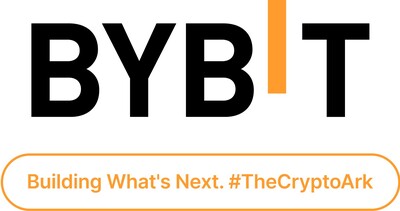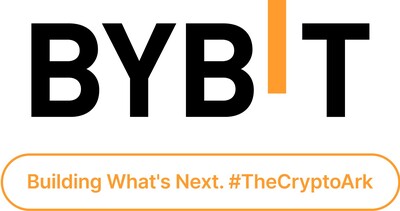TORONTO, May 4, 2023 /CNW/ –
About stablecoins and CADT
In recent years, stablecoins have emerged as a popular alternative to traditional cryptocurrencies as they offer the benefits of cryptocurrencies, such as fast and inexpensive transactions, while reducing the volatility often associated with other digital currencies like Bitcoin or Ethereum.
A stablecoin is a type of cryptocurrency designed to maintain a stable value relative to a traditional currency or asset. This stability is achieved through various mechanisms, such as pegging the value of the stablecoin to a fixed exchange rate, maintaining a reserve of the underlying asset, or using algorithmic stabilization mechanisms. As such, the CADT stablecoin has garnered attention and become an attractive option for users looking for a medium of exchange and a value storage in a more stable currency.
CADT is a stablecoin anchored 1:1 to the Canadian fiat currency and backed by collaterals in the form of Canadian dollars held in reserve, providing stability and reducing the volatility often associated with other not-so-stable cryptocurrencies. The CADT stablecoin was developed by Block chain Venture Capital Inc. , which is a publicly-traded company listed on Canadian Securities Exchange (under the BVCI ticker) and based in Toronto, Ontario, Canada. The goal of CADT is to provide a stable and secure digital asset for users to use in their daily transactions, and as a way to access the global cryptocurrency market without exposure to normal price fluctuations.
One of the unique features of CADT is its transparency where the CADT stablecoin is backed by the appropriate amount of Canadian dollars held in an escrow account by a trust company, as a subsidiary of a Schedule I bank, under the regulatory oversight of Office of the Superintendent of Financial Institutions. The Canadian dollar in fiat form is Canada’s only recognized legal tender. This level of transparency provides confidence to users that their CADT holdings are safe and secure. CADT can be used to make purchases at merchants that accept CADT as payment. It could also potentially be purchased and traded on selected cryptocurrency trading platforms (recognized by Ontario Securities Institute, BVCI’s domestic primary regulator) in the near future. This makes CADT a useful tool for Canadians who want to access the benefits of cryptocurrencies while still being able to transact in their preferred local Canadian currency.
In addition to its stability and transparency, CADT boasts fast and low-cost transactions with the blockchain technology -BVC Chain, which allows for near-instant transfers with competitive fees against similar payment schemes. This makes CADT both cost-effective and transactional efficient to move Canadian funds when compared to traditional banking methods with a much longer transmission-settlement cycle. For example, a single paper cheque drawn from a bank account and deposited into another bank account to cover a simple transaction from a payor to a payee can take up to 5 business days to process, reconcile, settle, and clear
CADT is a promising stablecoin that offers a safe and efficient way to participate in the global cryptocurrency market. Its transparency and stability make it an attractive option for those looking to avoid cryptocurrency volatility.
What is a stablecoin in general?
A stablecoin is a type of cryptocurrency that is designed to maintain a stable value relative to another asset or currency. This is achieved by pegging the value of the stablecoin to a specific asset or a basket of assets, such as fiat currencies, commodities, or other cryptocurrencies.
The idea behind stablecoins is to provide the benefits of cryptocurrencies, such as fast and low-cost transactions, while avoiding the volatility typically associated with traditional cryptocurrencies like Bitcoin or Ethereum. Stablecoins can be used for various purposes, such as facilitating international money transfers, providing a stable store of value and serving as a medium of exchange in decentralized finance (DeFi) applications.
There are different types of stablecoins, including fiat-backed stablecoins, commodity-backed stablecoins, and algorithmic stablecoins. Fiat-backed stablecoins are backed by a reserve of fiat currency, such as US dollars or Canadian dollars, held in a bank account or a custodial account in a trust. Commodity-backed stablecoins are backed by a reserve of a commodity, such as gold or silver. Algorithmic stablecoins use a complex system of algorithms and smart contracts to maintain their stability as the underlying assets.
The CSA’s characterization of stablecoins
On February 22, 2023, the Canadian Securities Administrators (CSA) published a Staff Notice 21-332, Crypto Asset Trading Platforms: Pre-Registration Undertakings—Changes to Enhance Canadian Investor Protection, in which the CSA shared its views on the characterization of stablecoins and outlined its requirements for crypto asset trading platforms trading in crypto contracts for stablecoins.
The CSA in SN 21-332 acknowledges that stablecoins, which it refers to as “value-referenced crypto assets,” experience volatility and notes that there have been several instances where stablecoins did not maintain their peg on trading platforms. Whether a particular stablecoin is, a security and/or derivative will depend on the specific facts and circumstances of the stablecoin. In SN 21-332, CSA staff notes that they believe that fiat-backed stablecoins generally meet the definition of security and/or derivative. Moreover, CSA staff indicates that they would consider stablecoins backed by assets other than fiat currency (such as gold or other crypto assets) also to be a security and/or derivative.
Platforms supporting crypto contracts for stablecoins
The CSA in SN 21-332 requires platforms trading crypto contracts for a particular stablecoin to seek prior written consent from the CSA and conduct sufficient due diligence to address the applicable risks of that stablecoin, including ensuring that:
- The stablecoin is a fiat-backed crypto asset (“FBCA”);
- Canadian distributions of the stablecoin are in compliance with Canadian securities laws;
- The stablecoin is fully backed by the underlying asset reserves with a market value at least equal to the value of the outstanding stablecoins at the end of each day;
- The underlying asset reserves are highly liquid assets such as cash or cash equivalents;
- The underlying asset reserves are held by a qualified custodian in favour of the stablecoin holders;
- The underlying asset reserves are segregated from assets of the issuer of the stablecoin and each class of crypto asset issued by the issuer of the stablecoin;
- The underlying asset reserves are subject to publicly accessible monthly attestations and an annual audit from an independent auditor;
- The redemption rights of the stablecoin holder against the issuer of the stablecoin are clearly articulated and publicly disclosed;
- The issuer of the stablecoin has a plan of recovery and/or orderly wind-down in case of a crisis or failure;
- The issuer of the stablecoin maintains effective governance practices;
- Key accurate information about the stablecoin is publicly available in plain and non-technical language; and,
- The platform is permitted by the CSA to trade crypto contracts in respect of the particular stablecoin.
CSA’s definition and standard of stablecoins
Value-Referenced Crypto Assets (VRCAs)
As outlined in its business plan, the CSA continues to monitor and assess the presence and role of stablecoins in Canadian capital markets and work collaboratively to identify and respond to regulatory implications and risks. As a result of this ongoing work, the CSA believes that stablecoins, or stablecoin arrangements, may constitute securities and/or derivatives.
There is no generally accepted definition of “stablecoin” and various iterations of stablecoin arrangements exist. In the CSA SN 21-332 (Canadian Securities Administrators Staff Notice 21-332) and the enhanced PRUs (pre-registration undertaking), CSA uses the term “Value-Referenced Crypto Asset”, or “VRCA”, since the use of the term “stablecoin” may be misleading in that these types of assets can also experience volatility. There have been several instances over the past year where crypto assets purported to be “stablecoins” did not maintain their “pegs” on trading platforms.
Generally, a VRCA is a crypto asset designed to maintain a stable value over time by referencing the value of a fiat currency or any other value or right, or combination thereof. The mechanism through which a VRCA is designed to maintain its value, also commonly known as its “peg” to the reference value, may be through maintaining a reserve of assets or through an algorithm coded into a smart contract. Whether a particular VRCA is a security and/or derivative will depend on the specific facts and circumstances.
The most common form of VRCA is intended to replicate the value of a single fiat currency and may give holders digital evidence of a direct or indirect claim on the issuer. The issuer may attempt to maintain the value of the VRCAs by setting aside a reserve of assets, often denominated in the fiat currency and may or may not be in a segregated reserve account (aka FBCA). Staff believe that FBCA generally meets the definition of “security” and/or would meet the definition of “derivative” in several jurisdictions.
Other similarly structured VRCAs are pegged to and backed by assets other than fiat currency (e.g., gold, other crypto assets) or a basket of types of assets (e.g., a basket of fiat currencies). Similar to FBCA, we would generally consider VRCAs pegged to or backed by assets other than fiat currency to be a security and/or derivative.
VRCAs remain primarily used to facilitate trading, borrowing, and lending of other crypto assets. Their design and use could give rise to various risks in the financial system, particularly if the risks of VRCAs are not adequately addressed.
The transparency of VRCA arrangements about their reserves of assets, the stabilization mechanisms of their value, and their governance are generally key issues that require appropriate regulation to protect VRCA holders. Currently, VRCA holders may not receive important information about the issuer or key features of the VRCA. Thus, they may not be aware of their rights and risks when trading such assets. In addition, consumers may be misled into believing that VRCAs are risk-free, that their price will not deviate from their reference value (both on regular markets and during difficult events), or that they have a direct claim on the reserve of assets. We generally note that the redemption rights on VRCAs are left to the issuer’s discretion and are not always clearly disclosed.
Some of the significant risks associated with VRCAs are related to the stabilization mechanism associated with maintaining the peg to their reference value, the management and the custodianship of their reserve of assets and their governance. In addition, the risk that is most likely to have an impact on the financial system as a whole, relative to other risks, is the redemption risk or “run” risk.
There are also VRCAs that attempt to maintain their value based on an algorithm coded in a smart contract instead of holding a dedicated reserve of assets. These are generally riskier than other types of VRCAs, as they are typically not collateralized and rely on algorithms and market incentives to peg their price to the reference value.
Although the existing standard form of PRU and the exemptive relief decisions for registered CTPs (crypto asset trading platforms) already include restrictions on clients entering into crypto contracts in respect of crypto assets that are securities and/or derivatives, we recognize that VRCAs may be used by the clients of CTPs as an on-ramp to deposit assets with the CTP, for the trading of other crypto assets, as a store of value during times of volatility in the crypto asset markets or to avoid converting their crypto assets into fiat currency, or they may be used for other purposes, such as a means of payment .
CSA also recognizes that the core and new provisions in the enhanced PRU may mitigate certain risks associated with VRCAs. Accordingly, the enhanced PRU includes a prohibition on CTPs allowing their clients entering into crypto contracts to buy or deposit VRCAs without the CTP obtaining the prior written consent of the CSA. Such permission may be subject to terms and conditions imposed on the CTP and the issuer of the VRCA.
If a CTP requests written consent from the CSA for its clients to enter into crypto contracts to buy or deposit a particular VRCA, we expect the CTP to conduct sufficient due diligence to ensure that applicable risks in respect of the VRCA are addressed, including that:
The VRCA is a FBCA;
- Where distributions of the F B C A FBCA are made in Canada, such distributions are made in compliance with applicable Canadian securities legislation;
- The issuer of the FBCA maintains a reserve of assets with a market value at least equal to the value of outstanding units of the FBCA at the end of each day;
- The reserve of assets is comprised of highly liquid assets, such as cash or cash equivalents;
- The reserve of assets is held by a qualified custodian in favour of the FBCA holders;
- The reserve of assets is segregated from assets of the issuer and the assets of each class of other crypto asset issued by the issuer;
- The reserve of assets is subject to a monthly attestation and an annual audit from an independent auditor, copies of which are made publicly accessible in a timely manner;
- The redemption rights of the VRCA holder, directly or indirectly, against the issuer of the FBCA, or the reserve of assets, are clearly articulated in policies and procedures and publicly disclosed;
- The issuer of the FBCA maintains a plan for recovery and to support an orderly wind-down in case of a crisis or failure by the issuer or an affiliate of the issuer;
- The issuer of the Fiat-Backed Crypto Asset FBCA maintains effective governance practices;
- Key accurate information about the FBCA is made publicly accessible in plain and non-technical language; and
- The CTP is not otherwise prohibited from allowing clients to enter into crypto contracts in respect of the FBCA.
CSA would also expect that the issuer of the VRCA proposed to be offered to Canadian clients of a CTP would take appropriate steps to address applicable risks, including those noted above.
For greater certainty, CSA would not expect to provide consent in respect of a VRCA that is not fully backed by an appropriate reserve but rather maintains its value through an algorithm. Also, a CTP providing a PRU, or a registered CTP, may not be able to satisfy their PRU commitments or regulatory obligations in respect of VRCAs that maintain their value through an algorithm, including know-your-product, account appropriateness, or other PRU commitments or regulatory obligations to clients.
If a registered CTP wishes to allow clients to enter into crypto contracts to buy or deposit a particular VRCA, they should contact their PR. Additionally, we invite issuers of VRCAs that would like a VRCA for which they are the issuer to be distributed in Canada or are seeking consent for a VRCA for which they are the issuer to be bought or deposited on a CTP through crypto contracts to contact a member of the CSA. Such issuers of VRCAs would be expected to explain the steps they have taken to comply with applicable Canadian securities legislation and address the applicable risks, including those noted above.
CSA cautions that FBCA, including any that CSA may consent to be traded on a CTP, are subject to various risks and are not the same as fiat currency. The fact that a regulator or securities regulatory authority may provide written consent to a CTP for its clients to enter into crypto contracts to buy or deposit a particular VRCA, should not be viewed as CSA’s endorsement or approval of the VRCA or an indication that the VRCA is risk-free. Further, any consent given should not be considered as a statement that the VRCA has been distributed in accordance with Canadian securities legislation.
The CSA will continue to monitor and assess the presence and role of VRCAs in Canadian capital markets and work collaboratively with other Canadian authorities, international organizations, and standard-setting bodies to respond to the regulatory implications and risks of such crypto assets.
This approach regarding VRCAs is intended to be an interim approach only, as the CSA continues its work in this area. CSA will consider whether any modifications to this approach are required both on an interim basis and for a longer-term framework, and whether any amendments are needed to existing exemptive relief decisions for registered CTPs.
Investor awareness and education
CSA (and its many provincial and territorial securities commissions and designated competent authorities) continues to uphold the collective two-pronged mandate: to maintain the integrity of the capital markets (over its member participants and registrants) and provide investor protection (through appropriate regulatory oversight in disclosure, registration, and educational and filing requirements).
In conjunction with the Canadian Securities Administrator, Alberta Securities Commission recently published a 9-page brochure on aptly titled “Investor’s Guide: Cryptocurrencies.” The guide outlines the nature of the crypto assets and crypto trading platforms that the crypto assets transact, backgrounds on blockchains and crypto assets, the buying and selling of crypto assets, applicable securities laws on crypto assets and crypto trading platforms, the ways to invest crypto assets, emerging scams, and fraud in crypto assets investing, practical considerations before investing, and the essence of learning the fundamentals of crypto assets and trading platforms as the closing remarks.
Outside of Canada, the Financial Stability Board (“FSB”), based in London, United Kingdom, published a consultative report in Oct 2022. The report’s purpose, titled Regulation, Supervision, and Oversight of Crypto-Asset Activities and Markets, put plainly that effective regulatory and supervisory frameworks should be based on the principles of “same activity, same risk, same regulation.” In early 2022, FSB examined the regulations and supervisions over crypto-asset activities with an emphasis on financial stability risks and prescribed nine (9) recommendations.
These recommendations strive to “promote the consistency and comprehensiveness of regulatory, supervisory, and oversight approaches… and … strengthen international coordination, coordination, and information sharing” in light of recent adverse and significant events in entities and individuals implicitly and explicitly involved with crypto-asset activities and markets.
Viewpoints from Blockchain Venture Capital Inc.
Blockchain Venture Capital Inc., as a public firm listed on the Canadian Securities Exchange and an emerging stablecoin issuer (currently seeking OSC registration), embraces openness and transparency in its stablecoin issuance and maintenance would enhance confidence and strengthen awareness. We believe that ownership has potential merits (being distributed, transparent, and immutable) in alternative assets, such as stablecoins, as one of the legitimate, valid, and competitive financial products offered in the marketplaces domestic and abroad.
About Blockchain Venture Capital Inc.
Blockchain Venture Capital Inc. (“BVCI”) is an Ontario, Canada-incorporated company which registers as a money service business with the Financial Transaction and Reports Analysis Centre of Canada (“FINTRAC”). It provides an innovative technology infrastructure to participants in the emerging blockchain and distributed ledger technology industry. Instrumental to BVCI’s business and growth strategy is BVC Chain, a proprietary blockchain platform and distributed ledger technology, which can operate as a centralized or decentralized ledger. BVC Chain was designed to be a turnkey solution which can be customized and implemented by organizations wishing to deploy blockchain platform-based solutions, products or services. The BVC chain will also serve as the platform and infrastructure for BvcPay and CADT. BvcPay is a cloud-based mobile application that is intended to have the capability to function as a Digital Currency wallet and which can facilitate point of Sale and online transactions using Bitcoin, Ethereum, and CADT. CADT is the native Digital Currency of the BVC Chain and intended to be a stablecoin. BVCI’s CADT business division is expected to issue CADT, a cryptographic stablecoin supported on a 1:1 basis with an equivalent amount of Canadian dollar held in a custodial account. CADT is expected to support real-time pricing, payment, settlement, digital asset issuance, and ledger capabilities.
References:
“Canadian Securities Administrators Staff Notice 21-332 Crypto Asset Trading Platforms: Pre-Registration Undertakings Changes to Enhance Canadian Investor Protection” Canadian Securities Administrators, February 22, 2023. Retrieved March 31 2023, http://www.osc.ca/sites/default/files/2023-02/csa_20230222_21-332_crypto-trading-platforms-pre-reg-undertakings.pdf
“Investor’s guide: Cryptocurrencies”, n.d., Alberta Securities Commission. Retrieved March 31, 2023 at http://www.securities-administrators.ca/
“Regulation, Supervision, and Oversight of Crypto-Asset Activities and Markets”, October 11, 2022, Financial Stability Board. Retrieved on March 31 2023 at ttps://www.fsb.org/2022/10/regulation-supervision-and-oversight-of-crypto-asset-activities-and-markets-consultative-report/
“Stability and security: the CSA’s characterization of stablecoins”, March 1, 2023, Torys LLP. Retrieved on Mar 31 2023 at http://www.torys.com/our-latest-thinking/publications/2023/03/the-csas-characterization-of-stablecoins
SOURCE Blockchain Venture Capital Inc.













